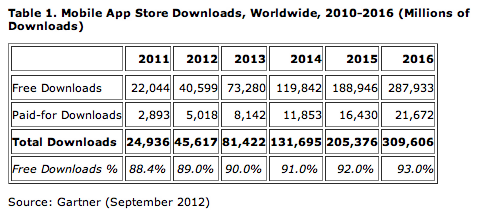In the last ten years, IBM, perhaps the world’s most iconic maker of the personal computer did two things that made people sit up and take notice. First, in 2004, it sold its PC division to China-based Lenovo Group in a deal valued at $1.75 billion. Then, around nine years later, it sold Daksh, its voice-based BPO to Synnex Corp. Both sales had one glaring similarity: They both involved flogging commoditized businesses with increasingly low margins and a questionable future.
 Today, both the computer hardware business as well as the voice-based BPO business is in peril. Computer sales have flattened while smartphones and tablets are experiencing scorching growth rates in excess of 150% in Asia. Meanwhile, the BPO business continues to face the twin challenge of rising costs in India and new, competitive destinations like the Philippines who continue to place more downward pressure on prices for voice services.
Today, both the computer hardware business as well as the voice-based BPO business is in peril. Computer sales have flattened while smartphones and tablets are experiencing scorching growth rates in excess of 150% in Asia. Meanwhile, the BPO business continues to face the twin challenge of rising costs in India and new, competitive destinations like the Philippines who continue to place more downward pressure on prices for voice services.
IBM’s experience is a crucial one to internalize, as the kind of upheaval that has taken place in the PC industry and the BPO one is going to inevitably rock the foundations of yet another which leverages cheaper labour as its core competitive advantage—namely, software services. The one harbinger of this change: The rise of Software-as-a-Service (SaaS), also known as ‘the cloud’ that has revolutionized how we use software today.
Much like India churned out world-class software services firms in the 1990s and 2000s, it is already proving to be a major generator of globally competitive SaaS companies across all spheres—in the enterprise space, the B2C arena as well as those targeting SMBs. These are companies with small teams and unique products sold under their own brand—strikingly dissimilar from their IT services predecessors that have dominated the technology space so far.
In other words, these are companies that have climbed up the value chain where their core offerings are not so easily disrupted by a cheaper wage rate. Here, the elegance of the product, the stability and novelty of its solution and, most importantly, the unvarnished benefit that allows the customer to become infinitely more efficient for as little a cost as possible through enterprise software is what is making this revolution a reality. And India, with its legions of technology graduates, a vibrant app developer community and a coterie of battle-hardened entrepreneurs is pushing the envelope even further. Suddenly, a 40-member team can churn out a platform or a service that can compete on the global stage with the likes of an Oracle or an IBM.
This is a brave new world for buying and selling things. For one thing, the internet has become a dominant channel used to either sell products or attract and engage new customers. This means that marketers need to widen their net through plug-and-play IT solutions that are at their fingertips rather than waiting for their IT department to weigh in. They now have to deal with new ways of managing customer relationships, orchestrating cross channel marketing, and implementing digital advertising
Then, there is the aspect of nimbleness. Winners and losers today are determined by solutions that have as quick a time to market as possible, with unlimited scalability and access to reports on the mobile. Enabling this imperative are sophisticated tools to mine and analyze volumes of data arising from these activities to improve decision-making. Therefore, embedding technology in every business process is more than just an effort to stay competitive—it’s a basic survival ploy that allows for faster turnaround, better customer service and improved monitoring of the health of the organization.
 Till now, though, being able to do all of this meant heavy in-house customization and up-front capex spends. The ‘pay as you’ go and ‘rent versus buy’ approach of SaaS has upended that reliance on customization, making even the most complex operations available on the net and easily integrated with other tools and apps for a fraction of the price. A company can now also try as many tools as possible rather than be handcuffed to a single one.
Till now, though, being able to do all of this meant heavy in-house customization and up-front capex spends. The ‘pay as you’ go and ‘rent versus buy’ approach of SaaS has upended that reliance on customization, making even the most complex operations available on the net and easily integrated with other tools and apps for a fraction of the price. A company can now also try as many tools as possible rather than be handcuffed to a single one.
In a product revolution sweeping the country unlike no other, the makers of many of the world’s most innovative products are right here in India. Whether it is the collaboration space, enterprise applications or business intelligence in the cloud, for the first time in India’s history, software products are being made for the global audience and widely appreciated and used by global consumers.
Here’s a snapshot at some of the players who are leading this charge:







